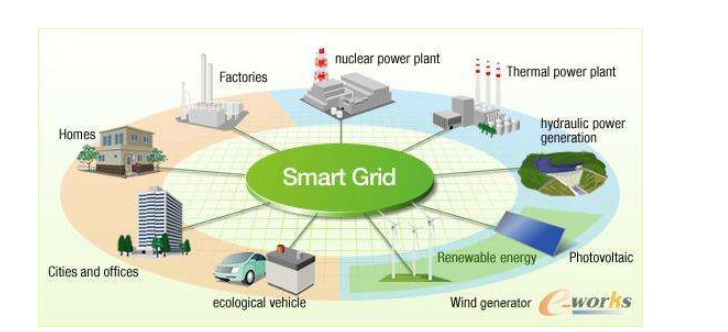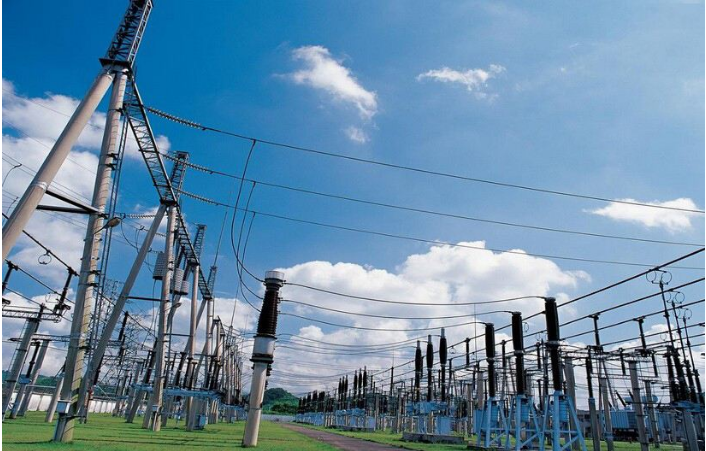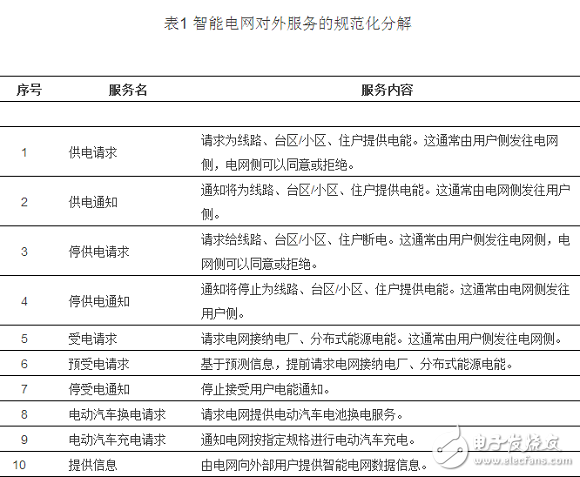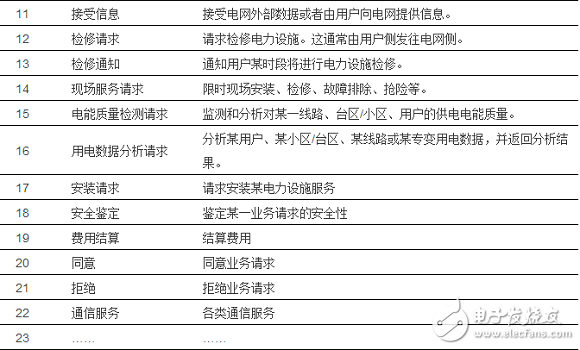Since the beginning of the 21st century, smart cities have become an important development trend with the acceleration of urbanization. According to statistics, the average urbanization rate at home and abroad has exceeded 50% as early as 2011. As of February 2014, 95% of the cities above the provincial level have proposed or are building smart cities. The development of the city is inseparable from the power service, and the smart grid will play an increasingly important supporting role. In order to better serve the construction of smart cities, in recent years, with the advancement of smart grid technology, especially the strong grid construction of the State Grid Corporation of China entered the stage of comprehensive construction, a lot of research and practice have been carried out on the interface of smart grid services. For example, the design of intelligent interactive service platform, the intelligent electricity interaction system and the operation mode research of the power service industry, etc., the related results have been applied in the practice of a large number of smart grid comprehensive construction projects in China. In terms of standardization of smart grid user-side interfaces, the International Electrotechnical Commission (IEC) established the Smart Grid User-Side Interface Project Committee (PC118) in 2011 and completed the publication of the Smart Grid User Interface Technical Report IEC/TR62939-1 in 2014. At present, the technical specification of the smart grid user interface is being developed. The current international standards for smart grid user interfaces include open automatic demand response specifications (OpenADR1.0 and 2.0), energy interoperability standards (EI1.0), and smart energy specifications (SEP2.0). In 2014, the China National Standards Committee approved the establishment of the domestic standardization committee corresponding to PC118: National Smart Grid User Interface Standardization Technical Committee (SAC/TC549), which covers the standards of power grid companies, third-party service providers and users. Information interaction and related intelligent electricity service. However, as a basic feature of a smart city, the business systems in the city are fully interactive, requiring not only the interaction of the city's business systems (including the smart grid) with the end users, but also the interaction between the various business systems of the city. This puts higher requirements on the smart grid service interface. At present, there are still gaps in related interface research results and related interface standard specifications. To this end, based on the analysis of the needs of smart cities and the gaps in the smart grid user interface, this paper adopts the idea of ​​normative decomposition and flexible business restructuring to design the external service interface of the smart grid, and to use smart city emergency. Management is an example, and a typical interactive business demonstration design is carried out. At present, a more common consensus is that the “smart city†of the 21st century should be able to fully utilize information and communication technology to sense, analyze, and integrate key information of the core system of urban operations, so as to make intelligent responses in various business systems. . Its core features are perception, interconnection, intelligence, and efficiency (intensive: optimal material circulation, energy full utilization). Although the concepts and schemes of smart city construction at home and abroad are different due to various time and space conditions, the characteristics of “interconnection and intelligence†are unified. The core of the smart city's service interface requirements for smart grids is the demand for interaction between business systems in smart cities. For example, in the reliable supply of power in smart cities, smart grids need to provide flexible service flow interfaces in terms of energy reception, supply and supply stoppage, and need to provide real-time monitoring, evaluation and prediction information interfaces for grid status; The smart grid is required to provide a plug-and-play power service interface, in particular, it needs to provide a full range of services for electric vehicles; in the use of renewable energy, it is necessary to provide flexible grid-connected interfaces for wind, light, water, and bioenergy. It is necessary to provide flexible support for the microgrid; in the aspect of emergency management, it is necessary to implement complex, flexible, real-time and automated interactions between the smart grid and the government's government emergency platform, fire, transportation, medical, public security, and meteorological systems. In fact, "friendly interaction" is one of the core features of the smart grid. In order to realize the "interconnection", "collaboration" and "intelligence" between the smart grid and the business systems and users in the smart city, the smart grid The external service interface further proposes the following requirements: 1) Openness and standardization: Openness requires the standardization of interfaces, while at the same time being easily understood and supported by other business systems in the city. The interface needs to maintain a certain stability on the basis of meeting the requirements, so that the business departments of the smart city are faced with a common set of smart grid service interfaces. 2) Comprehensiveness and diversification: The content of the interface includes not only information and communication interfaces, energy interfaces, but also support service interfaces, such as on-site maintenance and emergency rescue linkage. The interface should also support the diverse business needs of various industry sectors and users in the city, and can be updated at any time with changes in space conditions. 3) Real-time: All operations in the interface need to be completed within a certain time limit. If some interfaces are too long, they can be defined as asynchronous operation interfaces or further decomposed. 4) Automation: The interface needs to support automated processing based on ICT. 5) Intelligent: Interfaces need to support a variety of smart applications in the smart city's current and future industries. 6) Customization: Smart grid participates in a variety of services in smart cities. These do not need to be defined directly in the interface. In turn, the external service interface of the smart grid needs to support the services required by various types of users. 7) Reasonable grain size: the interface needs to have a suitable particle size. The interface level is too high and too general, which is not conducive to the definition and execution of customized services; the level is too low, too thin, and is not conducive to use and maintenance. Compared with the comprehensive and in-depth demand for smart grid interfaces in smart cities, and facing a large number of smart city interactive business needs, the current results of the relevant smart grid service interfaces are still far from enough. 1) The interactive needs of smart cities are all-round, especially the interaction between various business systems in the city, and the current research results mainly focus on demand response, user energy efficiency and so on. 2) The ease of use of the service interface. Smart grids have many standard specifications in their own fields, and smart city business systems also have their own specifications. In practical applications, it is impossible to require all relevant business systems in the city to understand the relevant information models of the smart grid and to deeply understand the relevant standards in the power industry. 3) Research on the security of the external service interface of the smart grid needs to be strengthened. This involves security issues such as grid reliability, user privacy data, trade secrets, and related legal consequences. How to deal with the above security problems in an environment where smart city business is fully interactive is a must to consider in the design of smart grid external service interfaces. 4) Relevant experiments and applications need to be strengthened. At present, smart grids at home and abroad participate in smart city interactive services based on certain interface standards, especially in the case of interaction with other business systems in the city. User evaluation, performance data, application experience, etc. are all lacking. 5) Insufficient understanding and utilization of other business system services in smart cities. Openness and interaction are mutual, making full use of the services provided by other business systems in the city, which helps the smart grid to better provide its own services. Based on the smart city's interface requirements for smart grids and the current research results of smart grid construction and interaction, the smart grid external services are standardized and decomposed. The decomposed services are the basic unit that can be used to reorganize more complex automated, intelligent interactive services. Table 1 defines the external service interface content specification of the smart grid mainly by means of information interface. The information flow represents various types of actual energy flow services, communication services and security services. Emergency rescue is one of the basic supporting functions of urban development, and the power sector plays an important role. Responding to serious natural disasters, social security incidents, malignant production and life accidents, and damage to important equipment requires a high degree of synergy between departments to adapt to the ever-increasing automation, intelligence, and real-time requirements of smart cities. For the scenario after the critical event occurs, Figure 1 is an example of smart city emergency rescue business design based on service decomposition and business reconstruction methods of various departments. The dotted line in the figure represents the information flow; the intersection of the two lines indicates that the information is sent to the department, and will continue to be sent to other departments; the text in the box represents the actual operation of each department. When there is an emergency in the user's emergency, the government emergency platform first checks and details the situation, then inquires about the various business systems in the city, and uses the monitoring capabilities of various business systems throughout the city to keep up to date. The power sector also provides information about the grid area. Monitoring information, grid operating conditions, critical and hazardous equipment, etc., and then the emergency platform comprehensively judges the criticality of the incident and the business departments that may need to participate, and issues an event notification to form a targeted overall based on the emergency plans of the relevant business systems. Emergency plans, and the coordinated operation of various city business systems including the smart grid. Figure 1 Smart City Emergency Rescue Interactive Business The characteristic of the business is that after the government emergency platform finds an abnormality, it can comprehensively monitor the monitoring information of various departments of the city and comprehensively evaluate the specific situation; then, in the case of integrating emergency plans of various departments, the overall plan is given; Each department uses the restructured business platform to exchange information in a timely manner and coordinate tasks. The main emphasis in Figure 1 is the synergy of various urban departments in emergency rescue, and does not include complete emergency management systems such as prevention, preparation, response, and recovery. Emergency platforms within various industries and departments in the city are still necessary. Avoiding damage to power equipment, power outages due to power grids, causing casualties due to power, and maintaining public safety are still issues that need to be addressed within the emergency rescue of power systems. However, it is possible to get more help from other departments in the city through this service design. With the development of smart grids, the improvement of grid security monitoring and evaluation capabilities, reliability, post-failure recovery capabilities and power emergency response capabilities are powerful support for the overall hardware rescue capability of smart cities. The design and standardization of the external service interface of the smart grid is of great significance for the full interaction of the business systems in the smart city. At present, relevant standards bodies at home and abroad have focused on the research and formulation of user-side interface standards for smart grids, and some related results have been formed. However, for the rapid development of the current smart city, the formulation of the interface is not enough in terms of quantity and quality. Based on the method of normalization decomposition, this paper makes a preliminary analysis of the external service interface of smart grid, and based on this idea, it designs the automation and intelligence of emergency rescue interactive business in smart city. It can be seen that the need for smart grid interfaces in smart cities in the future will be more comprehensive and in-depth, and this interface design needs to meet the needs of other departments and end users in the city in addition to the needs of power companies themselves. Usb Fan,Mini Usb Fan,Usb Rechargeable Fan,Portable Usb Fan Foshan Shunde Josintech Electrical Appliance Technology Co.,Ltd , https://www.josintech.com



